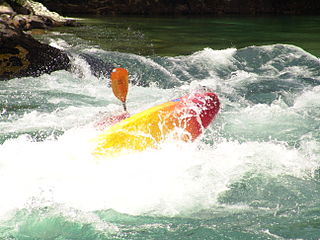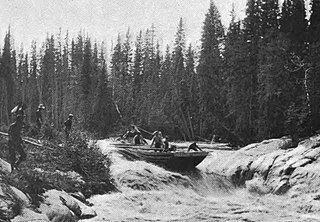
While a significant majority of water vessels are powered by diesel engines, with sail power and gasoline engines also popular, boats powered by electricity have been used for over 120 years. Electric boats were very popular from the 1880s until the 1920s, when the internal combustion engine became dominant. Since the energy crises of the 1970s, interest in this quiet and potentially renewable marine energy source has been increasing steadily, especially as more efficient solar cells have become available, for the first time making possible motorboats with an infinite range like sailboats. The first practical solar boat was probably constructed in 1975 in England. The first electric sailboat to complete a round-the-world tour, including a transit of the Panama Canal, using only green technologies is EcoSailingProject.

An outboard motor is a propulsion system for boats, consisting of a self-contained unit that includes engine, gearbox and propeller or jet drive, designed to be affixed to the outside of the transom. They are the most common motorised method of propelling small watercraft. As well as providing propulsion, outboards provide steering control, as they are designed to pivot over their mountings and thus control the direction of thrust. The skeg also acts as a rudder when the engine is not running. Unlike inboard motors, outboard motors can be easily removed for storage or repairs.

A dinghy is a type of small boat, often carried or towed by a larger vessel for use as a tender. Utility dinghies are usually rowboats or have an outboard motor. Some are rigged for sailing but they differ from sailing dinghies, which are designed first and foremost for sailing. A dinghy's main use is for transfers from larger boats, especially when the larger boat cannot dock at a suitably-sized port or marina.

The Grumman Aircraft Engineering Corporation, later Grumman Aerospace Corporation, was a leading 20th century American producer of military and civilian aircraft. Founded on December 6, 1929, by Leroy Grumman and his business partners, it merged in 1994 with Northrop Corporation to form Northrop Grumman.

Whitewater kayaking is an adventure sport where a river is navigated in a decked kayak. Whitewater kayaking includes several styles. River running; where the paddler follows a river and paddles rapids as they travel. Creeking usually involving smaller, steeper, and more technical waterways. Creek boats tend to be short but high volume to allow for manoeuvrability while maintaining buoyancy. Slalom requires paddlers to navigate through "gates". Slalom is the only whitewater event to be in the Olympics. Play boating involves staying on one feature of the river and is more artistic than the others. Squirt boating uses low-volume boats to perform special moves in whitewater features.

Boating is the leisurely activity of travelling by boat, or the recreational use of a boat whether powerboats, sailboats, or man-powered vessels, focused on the travel itself, as well as sports activities, such as fishing or waterskiing. It is a popular activity, and there are millions of boaters worldwide.

Evinrude Outboard Motors was a North American company that built a major brand of two-stroke outboard motors for boats. Founded by Ole Evinrude in Milwaukee, Wisconsin in 1907, it was formerly owned by the publicly traded Outboard Marine Corporation (OMC) since 1935 but OMC filed for bankruptcy in 2000. It was working as a subsidiary of Canadian Multinational Bombardier Recreational Products but was discontinued in May of 2020.

Outboard Marine Corporation (OMC) was a maker of Evinrude, Johnson and Gale Outboard Motors, and many different brands of boats. It was a multibillion-dollar Fortune 500 corporation. Evinrude began in Milwaukee, Wisconsin in 1907. OMC was based in Waukegan, Illinois. They also owned several lines of boats such as Chris Craft, Lowe Boats, Princecraft, Four Winns, SeaSwirl, Stratos, and Javelin. OMC was also a parent company to Ryan, which made lawn mowers.

Mercury Marine is a marine engine division of Brunswick Corporation. Its main product is built in a manufacturing plant located in Fond du Lac Wisconsin, which is also the world corporate headquarters. They primarily design manufacture and produce marine specific motors, the largest sector being outboard engines. It also produces the MerCruiser line of sterndrives and inboard motors.

The Mackinaw boat is a loose, non-standardized term for a light, open sailboat used in the interior of North America during the fur trading era. Within this term two different Mackinaw boats evolved: one for use on the upper Great Lakes, and the other for use on the upper Missouri River and its principal tributaries.

A jon boat is a flat-bottomed boat constructed of aluminum, fiberglass, wood, or polyethelene with one, two, or three seats, usually bench type. They are suitable for fishing, hunting and cruising. The nearly flat hull of a jon boat tends to ride over the waves rather than cut through them as a V-hull might; this shallow draft – only a few inches – enables the jon boat to operate in very shallow water, but limits its use to calm waters. Jon boats typically have a transom onto which an outboard motor can be mounted. They are simple and easy to maintain, and inexpensive, though with many options to upgrade. Typical options may include live wells/bait wells, side or center consoles, factory installed decks and floors, electrical wiring, accessory pads/mountings, and casting and poling platforms.
Chapman Piloting & Seamanship, published by Hearst Books has been a leading reference book for power and sail boaters for nearly 100 years. Known as "the Bible of Boating", more than 3 million copies have been printed.

Creeking is a branch of canoeing and kayaking that involves descending very steep low-volume whitewater. It is usually performed in specialized canoes and kayaks specifically designed to withstand the extreme whitewater environment in which the activity occurs. In addition, the canoes and kayaks give the paddler improved performance and maneuverability needed to avoid river obstacles.

A trailer sailer is a type of sailboat that has been designed to be easily transported using a boat trailer towed by an automobile. They are generally larger than a sailing dinghy. Trailer sailers include day sailers and small cabin cruisers, suitable for living on.

Traditionally, many different kinds of boats have been used as fishing boats to catch fish in the sea, or on a lake or river. Even today, many traditional fishing boats are still in use. According to the United Nations Food and Agriculture Organization (FAO), at the end of 2004, the world fishing fleet consisted of about 4 million vessels, of which 2.7 million were undecked (open) boats. While nearly all decked vessels were mechanised, only one-third of the undecked fishing boats were powered, usually with outboard engines. The remaining 1.8 million boats were traditional craft of various types, operated by sail and oars.
Charles Frederic Chapman was an avid boater, editor of Hearst's Motor Boating magazine from 1912 to 1968, co-founder of the United States Power Squadrons, co-founder of the Chapman School of Seamanship and author of the standard boating reference work, Chapman Piloting.

The following outline is provided as an overview of canoeing and kayaking:
The Leeward 16 is an American sailing dinghy that was designed by Luger Industries and first built in 1962.
The Dovekie 21, often called just the Dovekie, is an American sailing dinghy, named for the sea bird. It was designed by Phil Bolger as a cruiser and first built in 1978.
The Skipper 20 is an American trailerable, "character" sailboat that was designed as a daysailer and pocket cruiser and first built in 1978. The designer is not known.














